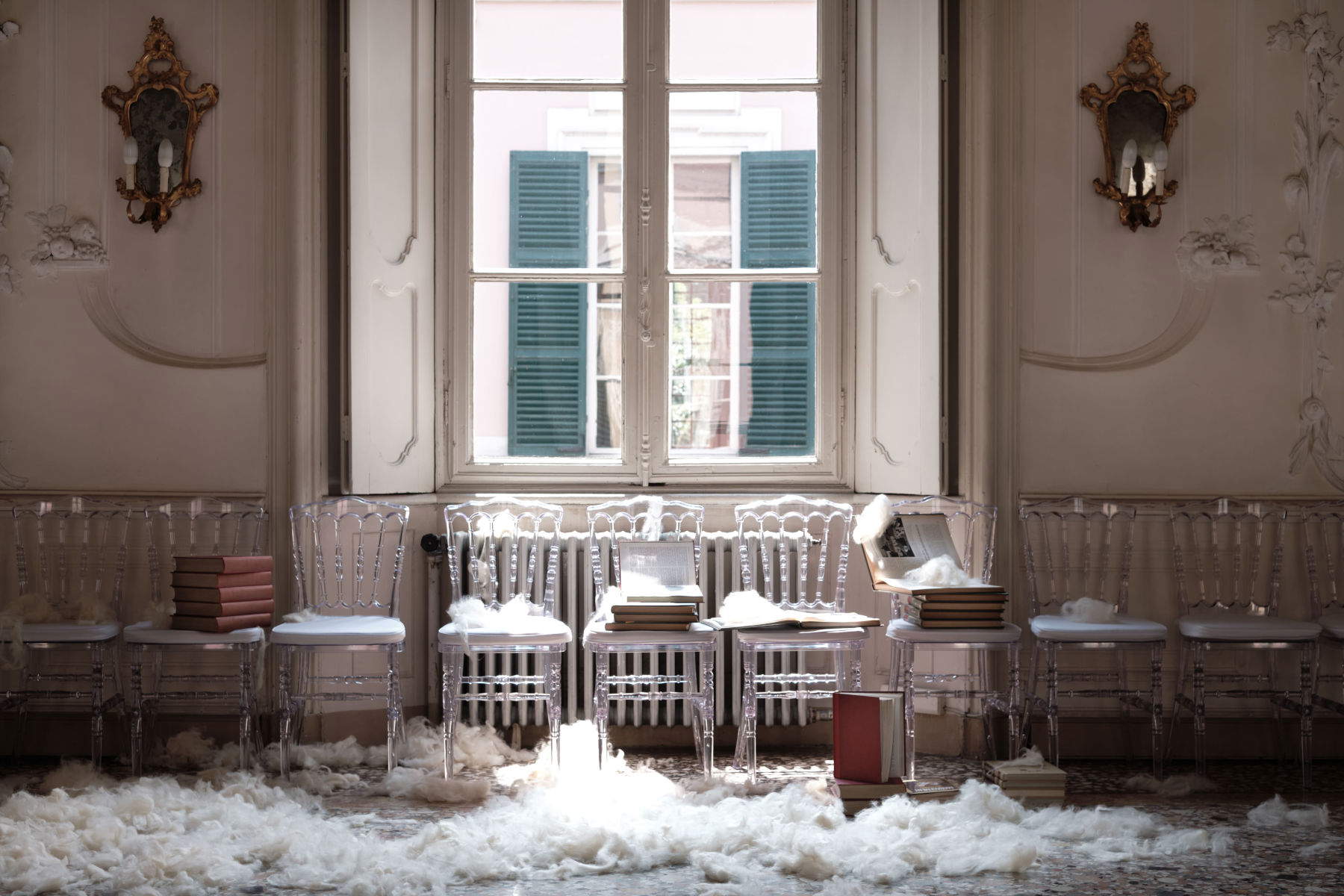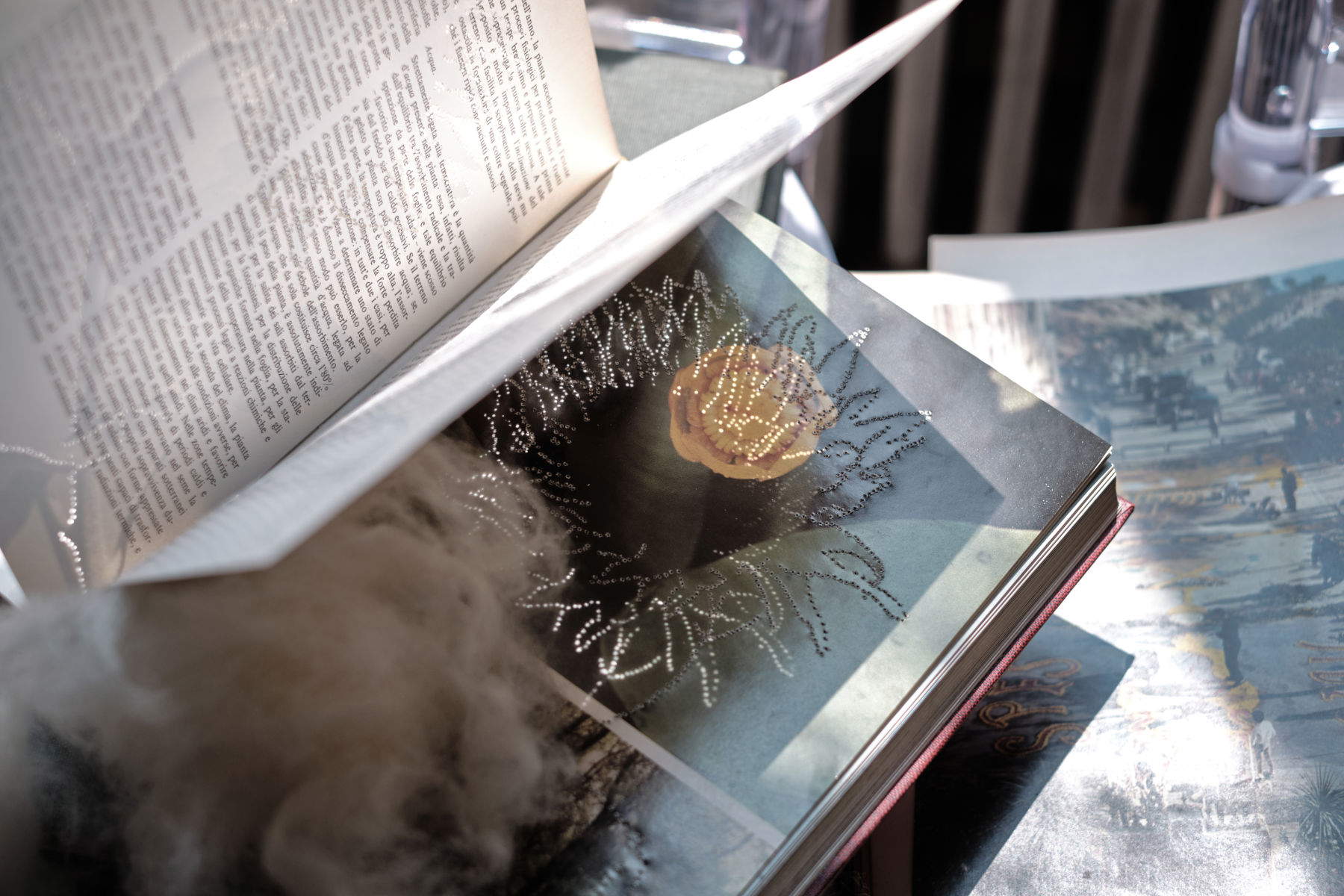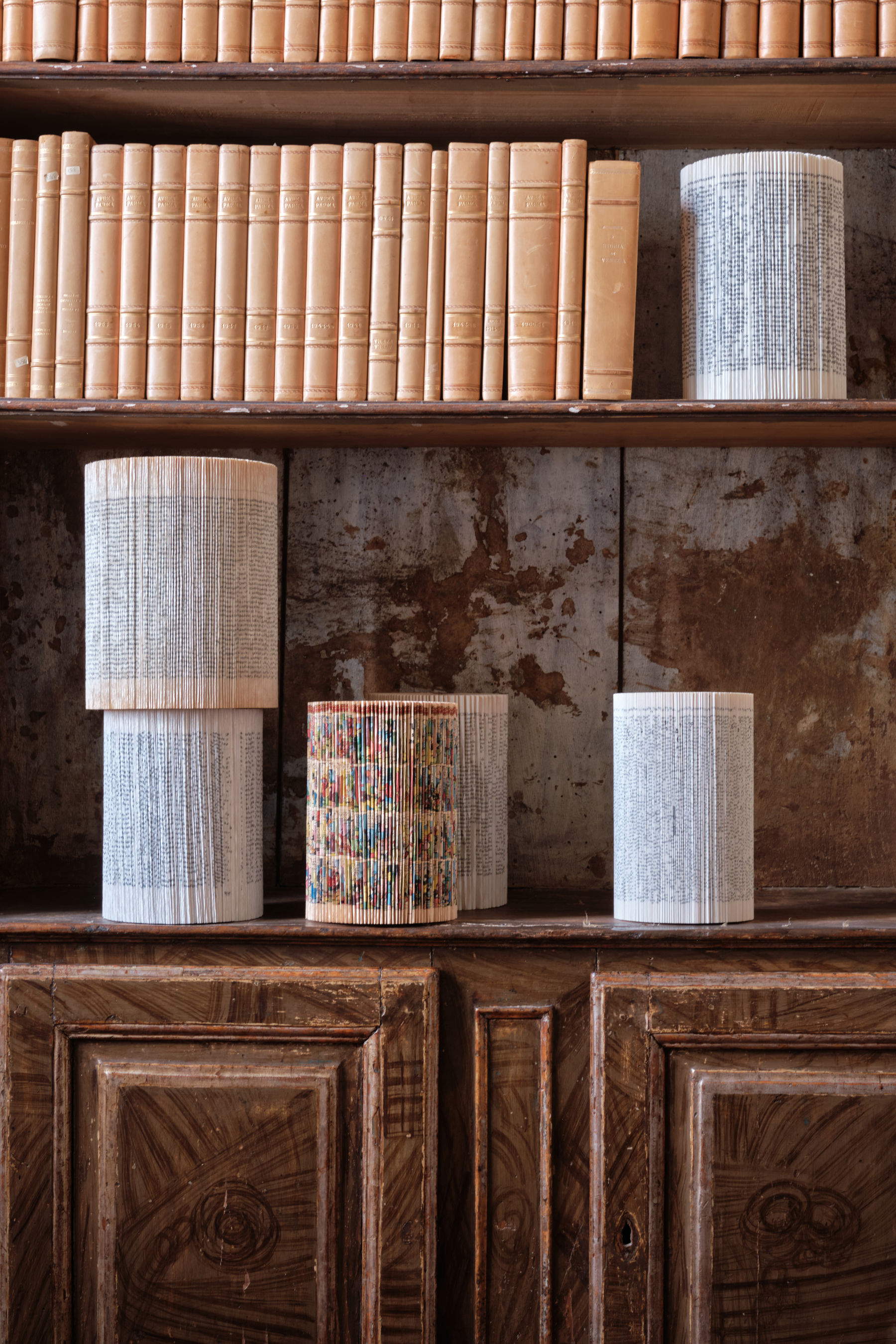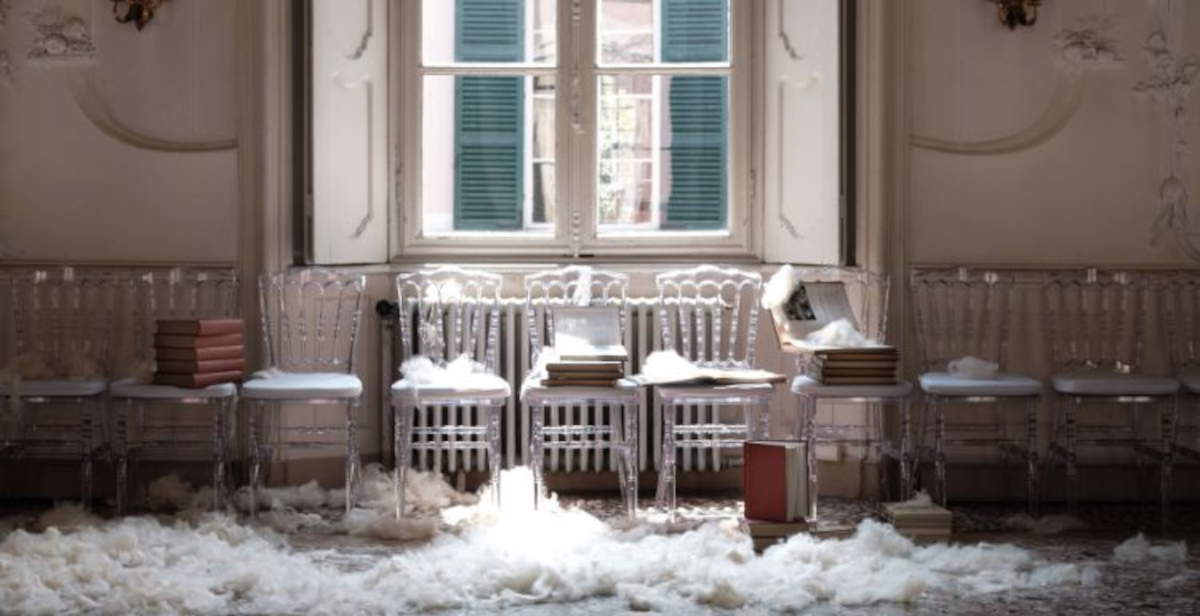From October 19 to December 14, 2025 Palazzo Marchi in Parma, hosts Coltivazioni erbacee, the solo exhibition of Stefano Arienti (Asola, 1961) curated by Elena Bray. The exhibition represents the first extensive retrospective devoted to manipulated books, a central corpus in the artist’s research, which for the first time is presented in its entirety. The exhibition traverses Arienti’s entire career and highlights the different phases of his experimentation, revealing how a seemingly minimal process translates into a long-range reflection on matter, language and the transformation of forms. The manipulated books are works born from existing volumes that the artist has chosen to modify through simple, repeated but precise interventions. Techniques such as piercing, folding and erasing act on the book by taking away its original function as a reading object to give it a new visual and conceptual dimension. Arienti thus constructs a personal lexicon that traverses the idea of repetition, rhythm, and craftsmanship to generate autonomous works that lie somewhere between object and installation.
The exhibition opens and concludes with two large installations that the artist has made in recent years and that have been rethought for the occasion for the spaces of Palazzo Marchi. The works create a frame capable of restoring continuity to the exhibition itinerary and at the same time emphasizing the scope of the research. Inside, the manipulations on books are presented in an order that allows the visitor to grasp Arienti’s technical and conceptual evolution, showing the variety of procedures and the coherence of an approach rooted in manual skill and direct experimentation with materials.



The title Herbaceous Cultivations is not accidental. The curator wanted to emphasize, through this definition, the regenerative dimension of Arienti’s work. Books, once transformed, are no longer usable in their primary function, but open up to a new horizon. Manipulation thus becomes a metaphor for rebirth, recalling the life cycles of plants that sprout, grow, transform and renew. The artistic gesture takes on the value of a biological process that is linked to concepts of vitality and mutation, establishing a parallel between nature and visual language.
The choice of Palazzo Marchi as the exhibition venue also ties in with this reflection. The building, a historic aristocratic residence in the center of Parma, has in recent years embarked on a path of openness to the contemporary. Indeed, the exhibition programming aims to enhance the space with projects that can regenerate and reread it in the light of current artistic practices. In this perspective, the encounter with Arienti’s work takes on a particular significance: the vital cycles evoked by the manipulations on the books find correspondence with the idea of a place that, while preserving centuries of history, offers itself as a laboratory for new visions. The exhibition is accompanied by the publication Coltivazioni erbacee, published by Via Industriae Publishing. The volume collects Elena Bray’s critical essay, which delves into the conceptual nodes of the project, and includes a selection of drawings made by the artist. The publication stands as an additional tool for analyzing Arienti’s practice, placing it in the panorama of contemporary research. The organization of the event was supported by ArcheoVea, which handled the operational management, ticketing, and reception and communication activities. The realization of the exhibition also benefited from the contribution of CFC Agenzia - Coscelli, Fornaciari and Corniali, confirming a synergy between institutions and private entities oriented to the enhancement of cultural heritage.
Stefano Arienti, born in Asola in 1961 and living in Milan, has been active since the early 1980s and is part of the context of renewal following Arte Povera and Transavanguardia. His research is based on manual gesture and technical experimentation: collage, folding, erasures and engravings sit alongside traditional painting and sculpture. His works rework images taken from art history and popular culture through manipulation and rewriting. Arienti has exhibited in major Italian institutions, including MAXXI (Rome), Castello di Rivoli, GAM Turin, Fondazione Sandretto Re Rebaudengo, MAMbo (Bologna), Fondazione Querini Stampalia, Fondazione Antonio Ratti, Villa Croce, Palazzo Ducale Mantova, Galleria Civica Modena, Galleria Nazionale San Marino, Villa Carlotta and Villa Celle. Internationally, he has participated in the XLIV and XLV Venice Biennials, the XII Rome Quadrennial, the Istanbul Biennial, the Xinjiang International Biennial, the Gwangju Biennial and the New Delhi Triennial, as well as group exhibitions at MoMA PS1 (New York), Centre d’Art Contemporain (Geneva), ICA (London), Palazzo Grassi, Palazzo Reale, Hangar Bicocca, MART, PAC, GAMeC, Museion and MAGA.
 |
| In Parma, Stefano Arienti's manipulated books exhibition at Palazzo Marchi |
Warning: the translation into English of the original Italian article was created using automatic tools. We undertake to review all articles, but we do not guarantee the total absence of inaccuracies in the translation due to the program. You can find the original by clicking on the ITA button. If you find any mistake,please contact us.